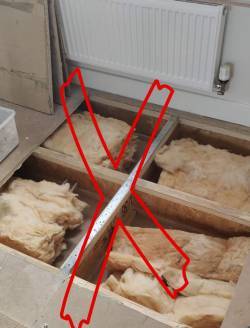Thermal insulation – done properly
Many energy applications have the purpose of maintaining a desired temperature – while the surrounding temperature differs and possibly also changes. If the desired temperature is higher, we speak of heating, and if it is lower, we speak of cooling.
Solely due to the laws of physics, there is a tendency in such circumstances for an energy flow to pass from an area with the higher temperature to the area with the lower temperature – this is known as “heat” or “heat flow”.
Measures which reduce this heat flow serve the purpose of thermal protection; the component mainly used for this is thermal insulation. Thermal insulation always has a loss-reducing effect - it does not matter whether the task is heating or cooling. There are still some misconceptions relating to the topic of thermal protection: the alleged problem will not arise at all if the appropriate approach is applied. We have discussed these here: Facts relating to thermal protection. By the way, heating (or cooling) energy is only necessary to the extent to which such losses occur in the first place. Because we can drastically reduce such losses, the required heating or cooling energy can in principle be kept as low as desirable1).
Today, space heating is by the far the most predominant energy application. Many of the
measures discussed here have to do with space heating and also the examples given here are
often chosen from this area. However, this does not mean that heat flows do not play a
significant role for hot water or food refrigeration or industrial processes; they too can be
reduced through better thermal protection.
Important basic principles for this are as follows:
- The area with the desired temperature should be “wrapped up” as completely as possible (using appropriate methods).
- In the process, it should be ensured that there are as few weak points as possible (known as thermal bridges).
- Attention should also be given to interruption of unwanted material flows (air passage).
- Other aspects of fault-free functioning of a building must not be (negatively) affected in the process: fire safety, structural integrity, protection against moisture, construction hygiene, living comfort, durability. If executed properly, thermal protection may bring additional improvements for all these functions.
In practical application, this means:
- Avoid interruptions in the thermal insulation. This is most effective if it is applied with the full thickness all around the area to be protected.
- Prevent any air from flowing behind the thermal insulation! Air flow through the insulation or all around the insulation through gaps can transport a very large amount of heat. A flow retardant layer must also be a part of every insulation layer 2).
Example: an insulation panel simply leaning against the wall will have almost no effect because the indoor air can simply flow around this panel just like it does with other things in the room; unfortunately, that's what many of the so-called “insulation measures” carried out in the past look like on closer examination: “beautifully cladded”, with the insulation material lying loosely in the space in between3). The building physics expert Professor Pohl commented this as follows: “You might as well leave the insulation material out in the garden!”
Further information on the topic of thermal protection as an overall concept.
To read about the measures for existing buildings within the framework of the “EfficiencyNOW” campaign:
